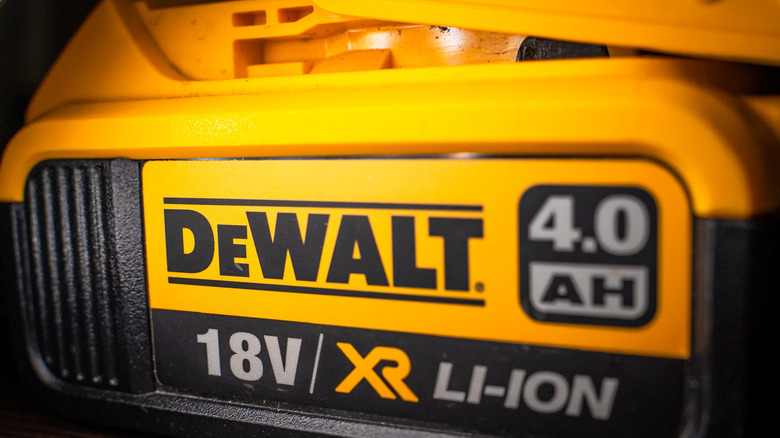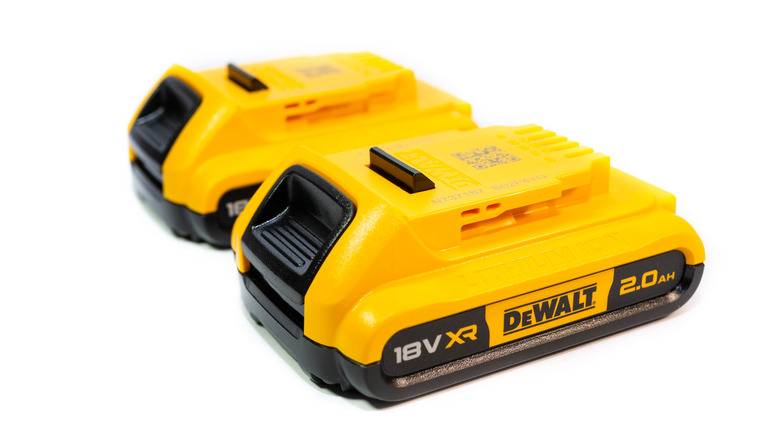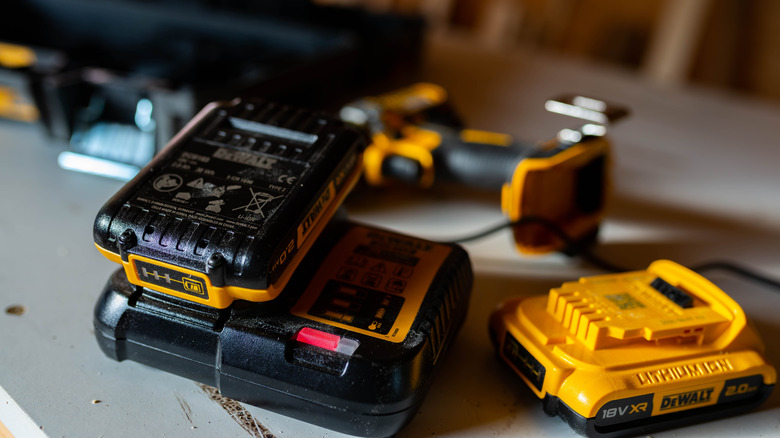Can A DeWalt Battery Be Reset?
No matter the brand, tool batteries will eventually deteriorate. They may fail to hold a charge, giving you less use time, or even not charge at all, making them essentially a lost cause — just two of the biggest problems and disadvantages of lithium-based batteries. Fortunately, if you're working with a brand as large as DeWalt, finding a retailer that sells new batteries is about as easy as discerning real DeWalt batteries from knock-offs. However, before buying a new battery, one might wonder if there's something they can do to revive their current faulty one.
One solution that may seem like a good idea is to reset it. There are a few ways to do this, as evidenced by the many tutorials online. For example, YouTuber Matthew Peech reset a bad battery by connecting its positive and negative terminals to those on a functioning one. After a few seconds of doing so, the dying battery had just enough energy to start charging again. Meanwhile, Home Battery Bank presented the idea of opening up a bad DeWalt battery to test the individual cells inside, explaining that bad ones can either be reset or replaced.
Overall, these appear to be smart solutions for stubborn, dying DeWalt batteries. In truth, though, resetting a DeWalt unit isn't a great idea for multiple reasons.
Risks of resetting a DeWalt battery
Resetting DeWalt batteries can be risky. The energy transfer method, where you connect a good battery to a bad one, can be painful if you're not careful. Dealing with electricity and partially exposed wiring can lead to electrical shock or even damage to the batteries themselves if the wires aren't attached correctly. Also, there's a risk of overheating the batteries if you leave them connected for too long. Opening a DeWalt battery is even more dangerous. Lithium-ion batteries are full of flammable and otherwise volatile materials that could cause serious harm. Mishandling can allow oxygen and moisture to oxidize the lithium within, possibly causing the cells to catch fire or explode due to thermal runaway.
On top of all this, there are other repercussions to resetting a DeWalt battery yourself. It's almost certainly going to void the 3-year limited warranty attached to it. DeWalt's warranty terms explicitly state that the company only covers damages that don't result from regular wear and tear or some form of abuse. It goes without saying that jumping a dying battery with a fresher one or opening the battery's casing to mess with the internal components could both be considered abuse. So, while it's possible, resetting a DeWalt battery isn't recommended. Instead, there are safer ways to get a fully functioning battery for your DeWalt tools.
Safer ways to get a functioning DeWalt battery
If you think your DeWalt battery needs a reset to get it working again, you should know by now that it isn't really worth it. Instead, you can go a few different routes. The most obvious is to dispose of the old battery properly — not by tossing it in the trash, mind you, but taking it somewhere that specializes in lithium-ion battery recycling – and purchase a new one. Unfortunately, DeWalt batteries aren't cheap, but if you need one that badly, it's better than paying for fire-related damages, or worse, hospital bills from a botched repair.
If you're lucky enough, though, you might not have to buy a new battery at all. As mentioned, DeWalt's batteries come with a three-year warranty that may allow you to get a new or repaired battery at no cost. Of course, the malfunction has to fall within the warranty's terms; if DeWalt judges that you've abused it or if it's failed due to regular wear and tear, you're out of luck. At the very least, you can get in contact with the folks at DeWalt over the phone or via its support website to explore your options.
As viable an option as resetting a DeWalt battery may seem, the risks behind it very much outweigh the reward. Exploring safer alternatives to get your tools powered up is undoubtedly the way to go.


